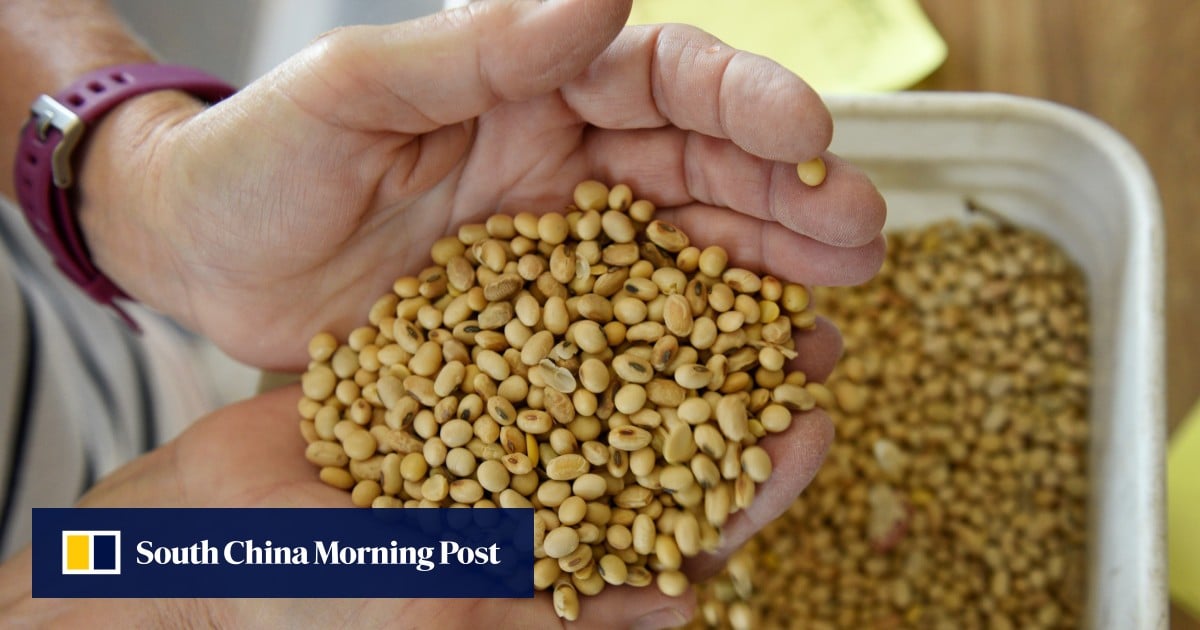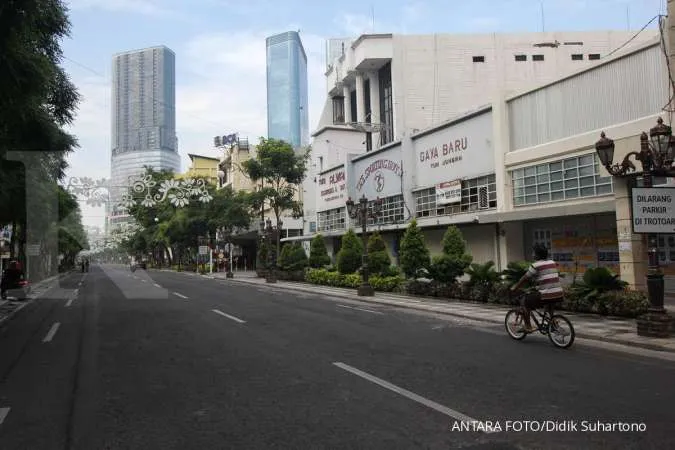Sinograin Auctions Imported Soybeans To Combat China's Supply Crunch

Table of Contents
The Scale of China's Soybean Deficit and its Causes
China's soybean deficit is substantial. While precise figures fluctuate, estimates suggest a shortfall of tens of millions of tons annually. This significant gap between domestic production and consumption is a result of several interconnected factors:
- Poor Domestic Harvests: Unfavorable weather patterns, including droughts and floods, have repeatedly hampered China's domestic soybean production. Diseases and pests further reduce yields, contributing to the overall shortfall.
- Increased Demand: China's burgeoning livestock industry, particularly its massive pork sector, demands an ever-increasing quantity of soybeans for animal feed. Simultaneously, the growing human population fuels demand for soybean-based food products. This expanding demand outpaces the country's capacity for domestic production.
- Trade Tensions: Past trade disputes and tariffs have impacted soybean imports, further exacerbating the supply shortage and leading to price volatility in the soybean market. Import restrictions and logistical challenges also play a role.
The cumulative effect of these factors has created a precarious situation, making China heavily reliant on soybean imports to meet its demand. This dependence highlights the vulnerability of its food security to external factors.
Sinograin's Intervention: Auctioning Imported Soybeans
Sinograin, a state-owned enterprise, plays a vital role in China's food security. As the country's primary grain procurement and distribution agency, it's tasked with ensuring stable supplies of essential agricultural commodities. To address the soybean shortage, Sinograin has begun auctioning significant quantities of imported soybeans.
- Auction Mechanics: These auctions are designed to provide a transparent and competitive mechanism for distributing imported soybeans to processors and feed mills. The auctions typically involve open bidding, with buyers competing to secure supplies at market-determined prices.
- Volume and Participants: The volume of soybeans offered in these auctions varies but is substantial, helping to directly inject supply into the market. Participation is generally open to licensed soybean processors and feed manufacturers across China.
- Purpose: The primary goal of Sinograin's auctions is to stabilize soybean prices, ensure a reliable supply for processors, and alleviate market pressure. By injecting larger quantities of soybeans into the market, they aim to prevent excessive price spikes driven by the shortage.
Impact and Effectiveness of the Auctions on the Soybean Market
The impact of Sinograin's soybean auctions on the market has been mixed but generally positive in the short-term.
- Price Stabilization: While price data fluctuates, the auctions have demonstrably helped to mitigate extreme price volatility caused by the supply crunch. Introducing greater supply through these auctions has helped to keep prices from escalating uncontrollably.
- Impact on Processors and Farmers: The increased availability of soybeans through the auctions has benefited soybean processors, allowing them to maintain production levels and meet consumer demand. However, the effects on livestock farmers are more nuanced, as feed costs remain a significant factor in their profitability.
- Broader Implications: Sinograin's actions highlight the importance of government intervention in ensuring food security, especially within a volatile global agricultural market. The long-term effectiveness of these auctions depends heavily on the success of broader policy initiatives to boost domestic production and diversify import sources.
Future Outlook for Soybean Supply in China
Addressing China's long-term soybean supply challenges requires a multifaceted approach:
- Increased Soybean Imports: China will likely remain a significant importer of soybeans for the foreseeable future, diversifying its import sources to reduce reliance on any single supplier.
- Boosting Domestic Production: Government policies aimed at improving domestic soybean yields, including research into disease-resistant varieties, investments in improved farming techniques, and provision of subsidies to farmers, are crucial.
- Alternative Protein Sources: Exploring and developing alternative protein sources, such as peas, canola, and even synthetic meat, can reduce dependence on soybeans for both animal feed and human consumption, providing crucial mitigation against future supply chain vulnerabilities.
Conclusion: Sinograin's Soybean Auctions: A Crucial Step in Addressing China's Supply Crunch
China's soybean supply crunch presents a significant challenge to its food security. Sinograin's strategic intervention through soybean auctions has provided a vital short-term solution by stabilizing prices and ensuring a more consistent supply to processors. However, the long-term solution requires a holistic approach involving increased domestic production, diversified import sources, and exploration of alternative protein sources. The success of Sinograin's strategy will hinge on the effectiveness of these broader policy initiatives. Stay informed about the ongoing impact of Sinograin's soybean auctions and the future of China's soybean supply by following [link to relevant news source or website].

Featured Posts
-
 Gugatan Rp 84 Miliar Menimpa Pembeli Nft Nike
May 29, 2025
Gugatan Rp 84 Miliar Menimpa Pembeli Nft Nike
May 29, 2025 -
 J K Rowlings Views And The Future Of The Harry Potter Franchise An Hbo Perspective
May 29, 2025
J K Rowlings Views And The Future Of The Harry Potter Franchise An Hbo Perspective
May 29, 2025 -
 I Deyteri T Hiteia Tramp 10 Simantika Gegonota Ton Proton Trion Minon
May 29, 2025
I Deyteri T Hiteia Tramp 10 Simantika Gegonota Ton Proton Trion Minon
May 29, 2025 -
 Hujan Turun Pagi And Malam Di Jawa Timur Ramalan Cuaca Besok 6 5
May 29, 2025
Hujan Turun Pagi And Malam Di Jawa Timur Ramalan Cuaca Besok 6 5
May 29, 2025 -
 Opplev 17 Mai I Moss En Minnerik Feiring
May 29, 2025
Opplev 17 Mai I Moss En Minnerik Feiring
May 29, 2025
